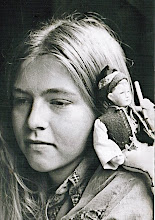
The railway station is, of course, the domed building on the left, which was constructed in the late 1870s. The building and underground tracks were expanded to accommodate S-Bahn and U-Bahn in later years.
At the beginning of the Cold War, this station was the hole in the Iron Curtain that allowed people from the east to escape to the west, at least until the Berlin Wall was built in 1961. At that time, the East German government also stopped the long-distance train connections. I arrived into this station from the west in 1980, and the surroundings were dismal. In fact, most of East Berlin was fairly grim at that time. The stores, if they had anything, would have a lot of one or two things and nothing else. Many items in limited supply, such as toilet seats, could only be bought with western currency.
After the fall of the Berlin Wall, the west and east stations were connected again, and traffic resumed, however there had been very little maintenance on the east side. Between 1991 and 1999, the station was completely overhauled, at a cost of many millions of Deutsch Marks. In 2008, a memorial to the 10,000 Jewish children who were saved by the Refugee Children Movement and left through this station, was unveiled.
Here's the back of the postcard.



















